Trump-Putin Summit Set for Alaska – What Steve Witkoff told Putin – Russian Subs are Nightmare
All eyes now turn to Alaska—and to the coming week—where history may be just a handshake away.
Aug 08, 2025
Moscow/Washington, D.C. — In a move that could reshape the geopolitical landscape, Russian President Vladimir Putin and U.S. President Donald Trump are set to meet in Anchorage, Alaska, on Friday, August 15, in what the Kremlin is calling a “historic summit” aimed at resetting strained bilateral ties and advancing peace efforts in Ukraine.
The confirmation came directly from Russian Presidential aide Yuri Ushakov, who announced Friday that both sides have finalized plans for the high-stakes meeting. The choice of Alaska—once known as “Russian America”—is no accident, Ushakov emphasized, citing both its symbolic significance and strategic relevance.
“Alaska represents a natural meeting ground,” Ushakov said. “Geographically, it’s where our nations are closest, separated only by the Bering Strait. Economically, it’s a region ripe with potential for joint Arctic development, energy cooperation, and infrastructure projects that could benefit both countries.”
The summit, which will mark the first time the two leaders meet on former Russian territory, is expected to focus squarely on one of the most pressing global issues: finding a durable resolution to the ongoing war in Ukraine. Officials from both Moscow and Washington indicate that the discussions will aim beyond short-term ceasefires, targeting long-term peace frameworks and security guarantees.
“This won’t be about optics or temporary fixes,” Ushakov noted. “The presidents are committed to exploring sustainable solutions—diplomatic, political, and economic—that can bring lasting stability to the region.”
Preparations for the summit are already underway, with diplomatic teams from both countries entering intensive consultations in the coming days. Security, logistics, and agenda-setting are top priorities, as officials acknowledge the complexity of coordinating such a high-profile encounter.
The selection of Alaska adds a layer of historical resonance. Once a vital outpost of the Russian Empire, the vast northern territory was sold to the United States in 1867 for $7.2 million—a deal that remains a topic of debate in Russian political circles. Just last year, Crimean State Council head Konstantinov quipped that if the U.S. wanted to buy Russia’s Commander Islands, Moscow might consider selling Alaska back—at “market price.”
At its closest point, Russia and Alaska are separated by just 86 kilometers (53 miles) across the Bering Strait, with Big Diomede (Russia) and Little Diomede (U.S.) islands lying a mere 3.8 kilometers apart—so close you can almost shout across the border.
While direct air links between Petropavlovsk-Kamchatsky and Alaskan cities existed in the past, no commercial flights currently operate, making diplomatic travel a logistical challenge. However, officials say both delegations are prepared to overcome these hurdles for what could be a turning point in modern diplomacy.
Analysts suggest the Alaska summit could signal a dramatic shift in U.S.-Russia relations, long chilled by sanctions, espionage allegations, and proxy conflicts. By choosing neutral yet symbolically charged ground, both leaders appear to be sending a message: a new chapter may be beginning.
As the world watches, all eyes will turn to the frost-edged frontier of Alaska this August—where two of the 21st century’s most polarizing leaders hope to forge an unexpected path toward peace.
The potential summit—marking the first face-to-face encounter between the two leaders since Trump left office—has entered advanced logistical coordination, with Rome, Italy, emerging as the leading candidate for the venue. The Eternal City is being considered not only for its political neutrality but also for its robust security infrastructure and symbolic value as a historic crossroads of East-West dialogue.
Though the August 15 date remains the target, one senior advisor close to the Trump team cautioned that the summit could be pushed back by a few days—still within the same week—depending on Putin’s schedule and the outcome of ongoing preparatory talks.
“Everything is moving fast, but this is not a photo op,” the source said. “They’re preparing for substantive discussions on Ukraine, energy, and de-escalation.”
From Moscow Backchannel to Global Stage: The Road to a Trump-Putin Summit
The momentum for a direct summit was ignited earlier this week when Steve Witkoff, Trump’s special envoy on Russia and Ukraine, held a closed-door meeting with President Putin in Moscow on August 6. Lasting over three hours, the talks—which took place at the Kremlin’s Novo-Ogaryovo residence—covered a wide range of issues, including the British military men, prisoner exchanges, ceasefire frameworks, and the future of NATO-Russia relations.
Upon Witkoff’s return, Trump publicly praised the mission, calling it a “tremendous success” and stating that his envoy had made “significant progress” toward rebuilding direct communication channels with Moscow.
“We’re getting very close,” Trump said in a statement from his Mar-a-Lago estate. “I think I’ll be meeting with President Putin very soon—probably sooner than people think.”
That comment sparked immediate speculation across global capitals. Now, with multiple intelligence and diplomatic sources confirming that secure communication lines are open and contingency plans being activated, the prospect of a Trump-Putin summit is shifting from possibility to probability.
Aside that, it is also an opportunity for Trump to capitalize on, “a face-saving ultimatum move,” because Putin was not going to back down, Trump deployed Submarine missile, Putin launched a new class submarine. Both countries confronted each other with the weather war, as New York experienced it thereafter Kamchatka. so the big question is, what will Trump do after the ultimatum?
Expanding the Dialogue: A Future Trilateral Meeting with Ukraine on the Table
Beyond bilateral talks, Trump has signaled openness to a trilateral summit involving the leader of Ukraine—a dramatic shift from previous isolationist rhetoric. While no Ukrainian official has been formally invited, Trump said he “would be honored” to host such a meeting “in the right place and at the right time,” suggesting a neutral European city like Brussels or Warsaw could serve as a future venue.
However, the idea remains highly sensitive. Kyiv has not commented publicly, but Western diplomats warn that any peace initiative perceived as bypassing Ukraine could fracture NATO unity.
“Trump wants to own the peace process,” said a European security analyst who requested anonymity. “But peace can’t be imposed from the outside—it has to include Kyiv at the table.”
Still, the mere suggestion of a three-way summit underscores the strategic ambition behind Trump’s diplomatic push: positioning himself not just as a negotiator, but as the central architect of a new post-war order in Europe.
However, Kremlin has rejected a trio-meeting, and the Europeans are adamant on being on the table. We might see every step forward turned back, as the Europeans will mandate the Zelensky’s administration not to comply with the Russians demand if they do not get a seat on the table.
Shifting Geopolitical Chessboard: Middle East Option Still Alive
Adding another layer of intrigue, reports from August 8 indicated that an Arab nation—possibly Qatar or the United Arab Emirates—was also being considered as a potential summit location. Gulf states have previously hosted sensitive U.S.-Russia talks and offer discretion, advanced security, and mediation experience.
Yet, European venues now appear to dominate planning, likely to avoid perceptions of bias and to keep European allies informed, if not directly involved. Still, Gulf intermediaries may play a supporting role, particularly in logistics or backchannel coordination.
What’s at Stake?
A Trump-Putin meeting would be one of the most consequential political events of 2025, occurring at a time of intensifying conflict in Ukraine, rising nuclear tensions, and global energy instability. For Trump, it’s a chance to reassert his image as a deal-maker on the world stage, and a step closer to his much dreamed Nobel Peace Trophy. For Putin, it’s an opportunity to break diplomatic isolation and legitimize Russia’s strategic position.
But for the world, the stakes couldn’t be higher. As one senior State Department veteran put it:
“We’re not just watching a meeting being scheduled. We’re watching the architecture of global power being quietly rewritten—behind closed doors, one phone call at a time.”
All eyes now turn to Rome—and to the coming week—where history may be just a handshake away.
Ukraine Considers Ceasefire on Current Front Lines Amid Diplomatic Shift — But Rejects Territorial Concessions
In a dramatic shift that could reshape the trajectory of the war in Ukraine, Kyiv is now open to a ceasefire based on current battlefield lines, according to intelligence sources cited by The Telegraph and German outlet Focus. However, the Ukrainian government remains firmly opposed to any international recognition of Russian-occupied territories, emphasizing that its constitution prohibits the president or parliament from legally altering the country’s territorial integrity under any circumstances.
Which is against what the Russians have advised.
While President Volodymyr Zelenskyy has not made any official public declaration, behind-the-scenes assessments from senior Ukrainian officials suggest a growing realization: military liberation of all occupied territories—particularly the Donbas—is no longer feasible in the short term. As a result, Kyiv is reportedly shifting toward exploring diplomatic pathways that could freeze the conflict without legitimizing Russia’s gains. This does not mean surrender, sources stress, but rather a strategic pause to consolidate defenses, rebuild military capacity, and await future opportunities for reversal.
“We cannot win back everything by force today,” said a high-level advisor to the Office of the President. “But we can stop the bleeding. We can preserve what we have. And we can prepare for the long game.”
Trump’s Backchannel Proposal: A 49-Year Freeze on Territorial Disputes?
The evolving landscape follows explosive reports from Poland which claim that Steve Witkoff, special envoy for U.S. President Donald Trump, delivered a controversial peace framework to Vladimir Putin during a secret August 6 meeting in Moscow.
According to the report, the proposal includes:
- A ceasefire without a formal peace treaty—effectively freezing hostilities along the current front lines.
- De facto recognition of Russian control over occupied regions, with the formal status of these territories postponed for 49 or 99 years.
- A phased lifting of Western sanctions on Russia, contingent on ceasefire compliance.
- A long-term plan for resuming European energy cooperation, including the return of Russian oil and gas exports to select markets.
- No commitment from the U.S. or NATO to halt military aid to Ukraine.
- No promise of NATO non-expansion—a key Russian demand left unmet.
If accurate, this framework represents a radical departure from current Western policy, which insists on Ukraine’s full territorial restoration as a precondition for peace. The 49- or 99-year deferral clause, in particular, has sparked intense debate—drawing comparisons to the 1997 Sino-British Joint Declaration on Hong Kong, where Britain returned the territory to China under a “one country, two systems” model for 50 years.
However, experts warn against misreading the analogy. Hong Kong was never “leased”—Beijing’s sovereignty was always recognized. The 50-year transition was about administrative autonomy, not ownership. As one international law scholar noted:
“Using the ‘49-year lease’ meme to suggest Ukraine’s lands could be temporarily ceded is not just misleading—it’s dangerous disinformation.”
Still, the idea has gained traction in certain media circles, particularly in Eastern Europe, where some outlets have recycled the narrative to imply that Russia might be “giving away” territory in a backroom deal—a claim with no basis in fact or law.
Kyiv Denies Knowledge of U.S. Proposal
In immediate response, Dmytro Lytvyn, a senior communications advisor to President Zelenskyy, categorically denied that any such proposal was discussed during recent diplomatic exchanges.
“Nothing of the sort was mentioned in yesterday’s leadership communications,” Lytvyn told Radio NV. “Witkoff did not present anything like this. He spoke about other matters.”
The statement raises serious questions about the authenticity and sourcing of the report, which relied on six anonymous “high-level” sources—a common tactic in geopolitical misinformation. Some analysts suggest the leak may have been deliberately planted to test reactions in Moscow, Kyiv, and Washington, or to pressure Ukraine into accepting a frozen conflict scenario.
Nonetheless, the mere circulation of such a plan signals a growing appetite among certain Western circles for a negotiated end to the war, even at the cost of territorial compromise.
“We’ve Lost Our Guard”: British Submarine Commander Warns of Russian Naval Resurgence
Amid the diplomatic turbulence, a stark military reality has resurfaced: the West’s naval dominance is eroding.
In a sobering BBC interview, Captain Bob Fancy, a retired Royal Navy submarine commander, issued a blunt warning:
“After the Cold War, we thought the threat was over. We relaxed. Russia didn’t.”
Fancy revealed that Russia has significantly expanded its submarine fleet in recent decades, while Western navies—particularly the UK’s—have seen their undersea capabilities shrink. Today, the U.S. operates around 70 submarines, Russia about 60, but the disparity is far starker for smaller NATO allies.
“The UK has only nine submarines,” Fancy said. “And realistically, only two or three are operationally ready at any given time. In terms of numbers, we’re dangerously exposed.”
He emphasized that while Western crews and technology remain superior, the quantitative gap is becoming a strategic liability—especially as Russia increases patrols in the North Atlantic and Arctic, testing NATO’s readiness.
“We used to track them. Now we can’t, we lose them. That’s how far we’ve slipped.”
Russian submarines are a nightmare, they can be deadly alive, and only appear where they want you to see them.
Conclusion: A Fragile Moment in the War
Ukraine stands at a crossroads. The idea of a ceasefire without peace—a frozen conflict—gains quiet traction as battlefield realities set in. Yet no official in Kyiv will ever sign away territory, not under a constitution that enshrines territorial integrity as sacred.
And as one former submarine commander put it:
“We’ve lost our guard. And the sea doesn’t forgive complacency.”
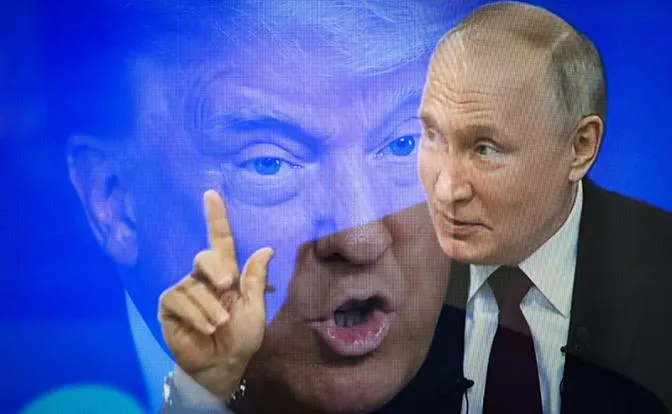



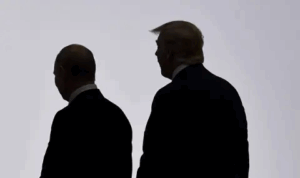
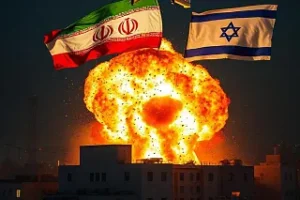
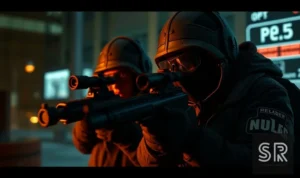
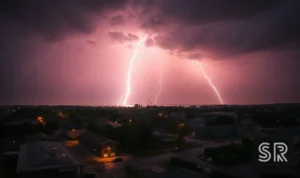
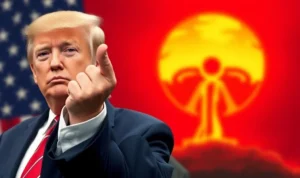
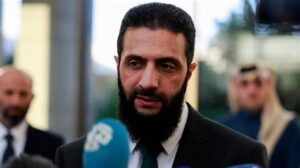
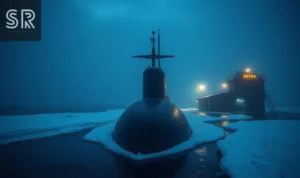
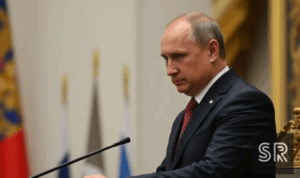
Post Comment